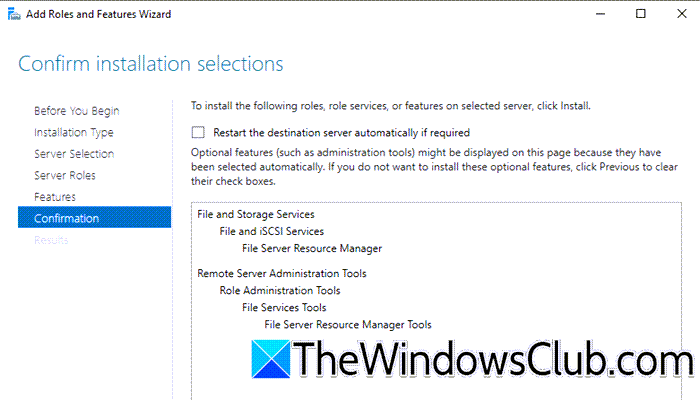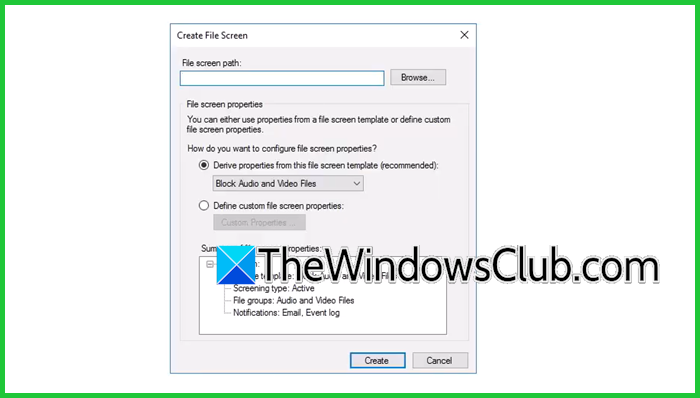File Server Resource Manager is a valuable tool that helps admins control and organize the storage of files on a server. In this guide, we will walk through the steps to install File Server Resource Manager on a Windows server.
What is the File Server Resource Manager?
Microsoft File Server Resource Manager (FSRM) is a set of tools from Microsoft designed to help administrators gain better insight, control, and management over the quantity and type of data stored on their servers. File Dynamics utilizes FSRM to facilitate quota management.
FSRM is a feature in Windows Server that helps admins control and organize file storage. With FSRM, they can set limits on storage usage, block certain types of files, and create reports to track how space is being used. It’s a useful tool for managing storage efficiently and keeping data organized.
It is essential to install FSRM on all servers where File Dynamics will manage quotas, including the server that hosts the Engine. Even if the Engine host does not have shares that will be managed, FSRM is still necessary because the FSRM COM interfaces must be available for the Engine to call them remotely on other servers.
How to install File Server Resource Manager on Windows server
Check out the steps below to figure out how to install File Server Resource Manager on the Windows server.
- Install File Server Resource Manager
- Configure Quotas
- Configure File Screening
- Configure additional features
Let’s get started with this guide.
1] Install File Server Resource Manager

First, we need to install the File Server role on your computer. This role allows us to manage shared folders and enable users to access files over the network. Follow the steps mentioned below to do the same.
- Open Server Manager, choose Add Roles and Features, and click Next.
- Select Role-based or feature-based installation, then click on Select a server from the server pool option, choose the target where the services will be installed, and then click the Next button.
- Go to File and Storage Services and expand Files and iSCSI services, then select the File Server Resource Manager option. Continue to click the Next button on each step.
- Additionally, users can select one or more features to add to the installation on the selected server, such as .NET Framework 4.7 Features, if needed.
- At last, click the Install button, and then click the Close button after it is installed.
To confirm that File Server Resource Manager is installed and working properly, go to Tools in Server Manager, and select File Server Resource Manager. If FSRM opens up without any errors, this confirms that the tool is installed.
2] Configure Quotas

Configuring Quotas allows the admin to limit the amount of space users or apps can use, therefore, ensuring that storage resources are used fairly. This also helps monitor storage trends, making it easier to plan for future expansion as usage grows. Follow the steps mentioned below to configure this:
- Go to Tools, click on File Server Resource Manager, expand Quota Management, and then select Quotas.
- Click on Create Quota and then in the Quota path, browse the folder where this quota will apply. Or right-click on Quotas and click on Create Quota.
- Select the pre-defined templates or create a custom quota, for the latter specify the limit and notification threshold.
- In the Notification Thresholds, configure emails, event log entries, or commands to run when certain limits are reached. Once done, click the Create button to apply the quota to the specified folder.
3] Configure File Screening

To prevent the storage of unauthorized or nonbusiness files, the admin can control the types of files that users can save on a server by configuring File Screening. Here’s how to do the same.
- Navigate to Tools, select File Server Resource Manager, and expand File Screening Management.
- Choose and right-click on File Groups, and then select the Create File Group option.
- Enter the File Group name, and define file groups by selecting the specific file extensions to block or allow, hitting the Add button after doing it, and then selecting OK. Once done, confirm that the newly created File Group appears in the File Group list.
- Next, go to the File Screen Template, and right-click on it. Select Create File Screen Template, enter the Template name, expand the File Groups to select the one we created earlier, and select Ok.
- Now, go to the Event log tab, select Send Warning to the Event log, and click OK. After this, verify that the File Group is listed in the File Screen Template list.
- The next step is to create a File Screen. Right-click on File Screens, and select Create File Screen.
- In the Create File Screen window, specify the File Screen Path where you want to screen this file, expand the Derive properties from this file screen template drop-down, select Block Executable Files, and select the Create button. Once again, confirm that the File Screen points to the selected folder.
To test the File Screen, log in to a client PC and attempt to copy an MP3 file to the HR folder, this would incite a pop-up indicating that access is denied. Now, log in to the server, and check whether a warning message stating something like the user attempted to save name.mp3 on the server.
Read: How to configure Domain Controller in Windows Server
4] Configure additional features
There are other features that users can configure such as Storage Reports management to generate reports on file usage. To do so,
- Navigate to Storage Reports Management, and click Schedule a new report task.
- Choose the report type, such as Duplicate files, Large files, etc, and then specify the folders or volumes to indicate in the report.
- Configure when or how often the report should be generated, and choose the specified location to save the report.
- Click Ok to save the configuration and run the report to review data.
That’s how you can install and configure FSRM on Windows Server.
Read: How to install and configure Direct Access on Windows Server
How to install file server in a Windows server?
Installing a file server in Windows Server is quite easy. The first step is to install the File Server role from the Server Manager and configure the properties of the folder a user wants to share. Check out our post on how to install and configure File server on Windows server to know the exact details.
Also Read: Install and configure DNS on Windows Server.